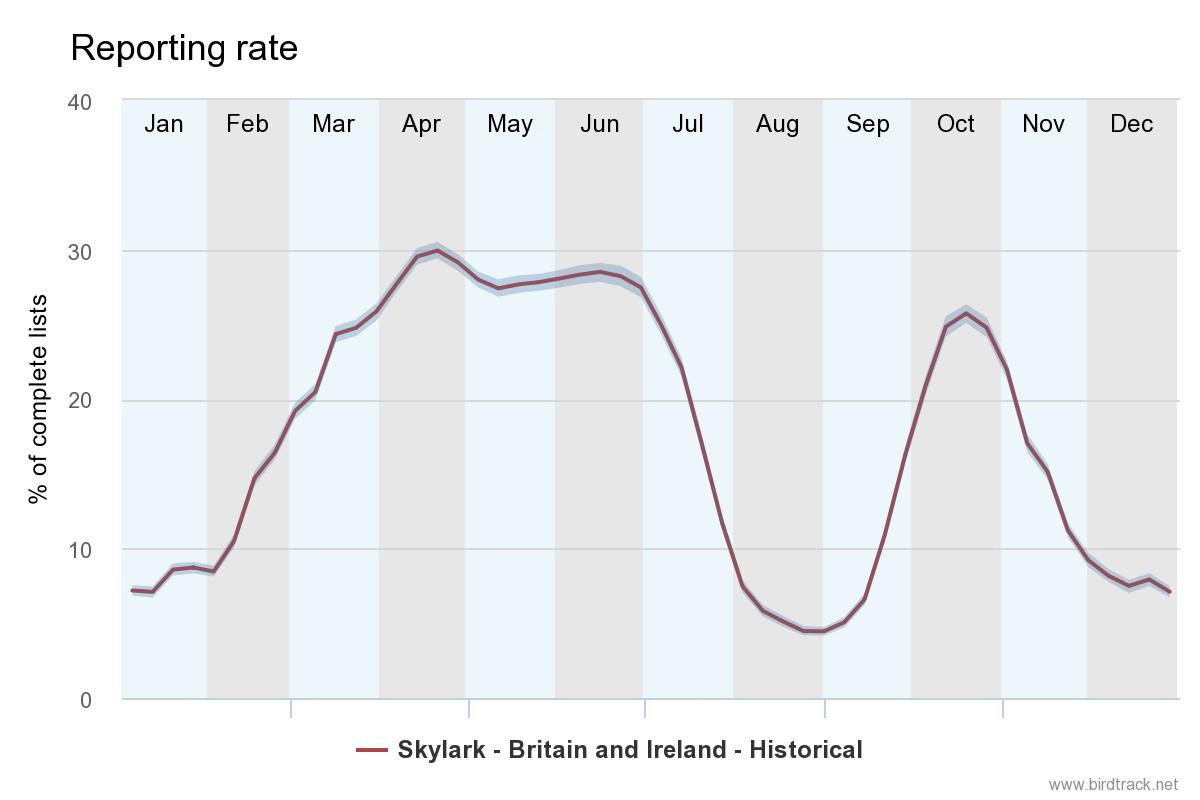Take part in the #100CompleteLists Challenge!
BTO's #100CompleteLists Challenge is the perfect way to begin your 2019 birding. The challenge is to log just two complete lists on BirdTrack every week at your local patch or further afield. However, if you want even more of a challenge, why not try for 2![]() 00 or even a daily complete list challenge?
00 or even a daily complete list challenge?
But what is a complete list? A complete list is everything you've detected and positively identified – by sight and/or sound – on a single birdwatching visit to a site. Don't worry about the 'ones that got away', and do err on the side of caution when trying to identify unfamiliar species or birds seen or heard very briefly/distantly. Our analyses take account of the fact that in any given complete list, there are likely to be a few apparently 'obvious' species missing.
Beginner birdwatchers' complete lists might not be as comprehensive as those of experienced birdwatchers for the same location. However, this does not adversely affect the results and provides important information about variation between observers.
There is no minimum number of species for a complete list because some places (such as upland areas) have very low species diversity, nor is there a minimum time period for a visit. However, complete lists should reflect a reasonable effort at/chance of detecting the majority of species likely to be present. Short visits to species-rich sites, for example, are not suitable for gathering complete lists because many species present are likely to be missed. Similarly, if weather conditions are bad enough to hinder your ability to detect many of the species you suspect are present, please don't mark your list as complete.
Why and how
Complete lists are extremely valuable because the proportion of lists containing a given species provide a good measure of how frequently that species is being detected at any point in the year. This in turn helps to monitor arrival and departure times of migratory species, whilst also providing fascinating insights into the within-year changes in detectability of 'resident' species such as Eurasian Skylark.

To submit a complete list, log in to BirdTrack then click Add records from Your options menu and specify the records you collected were Systematic (another name for complete list). After you've entered the visit details (site, date and, optionally, time, weather notes etc), either simply record the presence of each species you encountered by using the tick box, or enter a count of individual birds if you made one. Complete list can also be selected when entering records via the BirdTrack app. Please include a start and end time whenever possible: this adds important information about effort.
If you are taking part then you can let BTO and other 100 Complete List challengers who you’re getting on through social media, with the hashtag #100CompleteLists.

